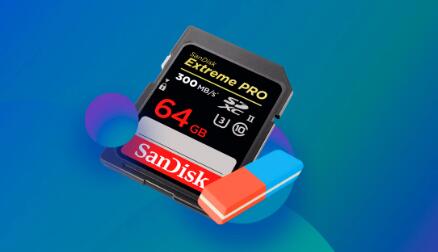What is SD Card Formatting?
Formatting an SD card involves preparing it for use by creating a new file system. This process erases all existing data and sets up a structure to store and manage new data. The file system is the method used by the operating system to organize and access files on the card.
Why Format an SD Card?
To Use in a New Device: Different devices may require specific file systems. Formatting ensures compatibility with the device you plan to use.
To Fix Errors: Sometimes, SD cards develop errors or become corrupt. Formatting can fix these issues by reinitializing the file system.
To Clear Data: If you want to erase all data on the card securely before disposal or reuse, formatting is a good option.
To Improve Performance: Over time, the performance of an SD card can degrade. Formatting can sometimes improve speed and efficiency by clearing old file fragments.

Types of Formatting
Quick Format: This process removes files from the card but does not check for bad sectors. It’s faster but less thorough.
Full Format: This method erases all data and checks for bad sectors. It’s more time-consuming but more thorough in preparing the card.
How to Format an SD Card
Formatting on Windows
Insert the SD Card: Connect the SD card to your computer using a card reader.
Open File Explorer: Go to “This PC” or “My Computer.”
Locate the SD Card: Right-click on the SD card drive and select “Format.”
Choose the File System: Common options are FAT32. exFAT, and NTFS. FAT32 is typically used for SD cards up to 32GB, while exFAT is suitable for larger cards.
Select Format Options: Check or uncheck “Quick Format” based on your needs.
Start Formatting: Click “Start” and confirm the action. The process will erase all data and prepare the card for use.
Formatting on macOS
Insert the SD Card: Connect the SD card to your Mac.
Open Disk Utility: Find it in Applications > Utilities.
Select the SD Card: Click on the SD card in the sidebar.
Click “Erase”: Choose the format you want (e.g., MS-DOS (FAT) for FAT32 or ExFAT).
Name the Card: Enter a name if desired.
Erase: Click “Erase” to start the formatting process.
Formatting on a Camera or Smartphone
Insert the SD Card: Place the card into the device.
Navigate to Settings: Go to the settings menu of the device.
Find Storage Options: Look for “Storage” or “Format SD Card.”
Select Format: Choose to format the SD card. Confirm the action and wait for the process to complete.
Considerations and Tips
Backup Your Data
Before formatting, ensure that you back up any important data. Formatting will erase everything on the card, so save any files you wish to keep to another storage device.
Choose the Right File System
FAT32: Best for cards up to 32GB. Compatible with most devices but has a maximum file size limit of 4GB.
exFAT: Suitable for larger cards and files. Ideal for SD cards over 32GB and supports larger file sizes.
NTFS: Generally used for larger drives and more advanced features, but may not be compatible with all devices.
Regular Maintenance
If you frequently use your SD card, consider formatting it periodically to keep it in good condition. This can help prevent data corruption and maintain performance.
Avoid Frequent Formatting
Frequent formatting can wear out the SD card over time. Only format when necessary and ensure you use proper ejection methods to avoid file system damage.
Troubleshooting Common Issues
SD Card Not Recognized
Check the Card Reader: Ensure it’s functioning properly.
Try a Different Port: Sometimes the issue is with the port rather than the card.
Update Drivers: For Windows users, updating drivers can resolve recognition issues.
Formatting Errors
Check Card Health: If formatting fails, the card may be damaged or corrupted. Use diagnostic tools to check its health.
Try a Different Device: Attempt formatting using another device or computer.
Use Recovery Software: If the card is failing but you need data recovery, consider using specialized data recovery software before formatting.
Formatting an SD card is a useful process for maintaining its performance and compatibility with various devices. By understanding the different types of formatting and considerations involved, you can make informed decisions and avoid common pitfalls. Whether you’re preparing the card for new data, fixing errors, or clearing old files, following the proper steps ensures a smooth and efficient formatting process.
About us and this blog
Panda Assistant is built on the latest data recovery algorithms, ensuring that no file is too damaged, too lost, or too corrupted to be recovered.
Request a free quote
We believe that data recovery shouldn’t be a daunting task. That’s why we’ve designed Panda Assistant to be as easy to use as it is powerful. With a few clicks, you can initiate a scan, preview recoverable files, and restore your data all within a matter of minutes.
Subscribe to our newsletter!
More from our blog
See all postsRecent Posts
- Recovery ssd upgrade failed exagrid error 2025-04-03
- Smart hard disk error 301 2025-04-03
- Error code 36 external hard drive 2025-04-03










